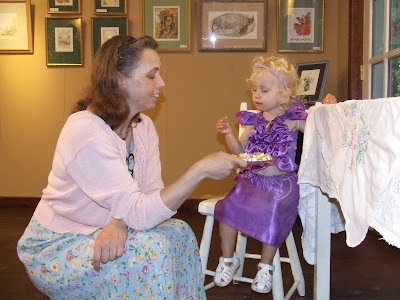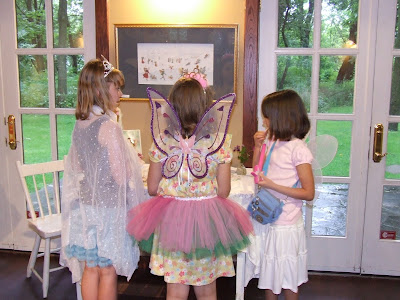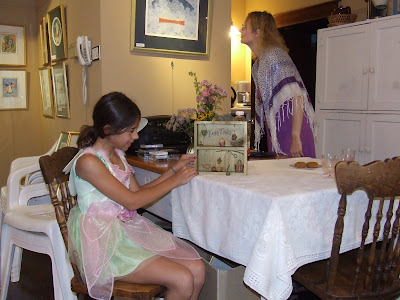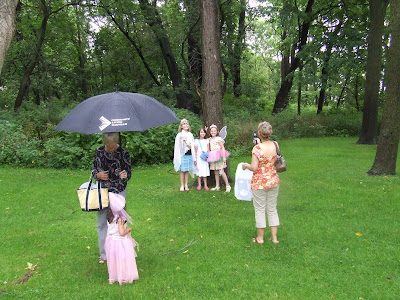Viewing: Blog Posts Tagged with: Pod Type-Casting, Most Recent at Top [Help]
Results 1 - 23 of 23
Blog: Aris blog (Login to Add to MyJacketFlap)
JacketFlap tags: illustration, boy, imagination, flowers, drawing, watercolor, children's book, fish, boat, hat, poppies, king, draw, bear, tales, devil, paper boat, aviator, Add a tag
Blog: the enchanted easel (Login to Add to MyJacketFlap)
JacketFlap tags: illustration, family, love, flowers, china, acrylic, portrait, adoption, sun, world, poppies, kawaii, stars, canvas, usa, whimsical, commission, the enchanted easel, custom painting, Add a tag
Blog: the enchanted easel (Login to Add to MyJacketFlap)
JacketFlap tags: multicultural, illustration, family, china, acrylic, adoption, poppies, kawaii, motherbridge of love, canvas, whimsical, family portrait, commission, the enchanted easel, custom painting, u.s.a., Add a tag

but for a good reason. :)
have been super busy working on a special commission for the family of a little girl i once taught almost ten moons ago. (yikes, feeling old!)
the mom came to me asking for a custom painting based on the gorgeously illustrated book entitled, "motherbridge of love". in a nut shell, it's a sweet book about adoption...east meets west (u.s.a. and china). well, i couldn't have been happier to put my spin on parts of that beautiful book.
just about wrapping up this painting this week and i'm so looking forward to presenting it to them. such a lovely mother and adorable daughter, they are....:)
Blog: the enchanted easel (Login to Add to MyJacketFlap)
JacketFlap tags: cherry blossoms, the enchanted easel, custom painting, illustration, china, sketch, children's art, adoption, wip, world, poppies, kawaii, usa, whimsical, family portrait, commission, Add a tag
Blog: the dust of everyday life (Login to Add to MyJacketFlap)
JacketFlap tags: summer, landscape, poppies, Amy Huntington, Add a tag
Amy Huntington
https://amysfieldnotes.wordpress.com
Blog: Aris blog (Login to Add to MyJacketFlap)
JacketFlap tags: illustration, girl, children's art, watercolor, poppies, Add a tag
Blog: OUPblog (Login to Add to MyJacketFlap)
JacketFlap tags: Books, History, remembrance, Biography, WWII, Journals, remembrance day, poppies, British, Europe, wwi, first world war, Second World War, European history, British history, *Featured, thinglink, Online products, in flanders fields, armistice, Europe in WWI, WWI centenary, Treaty of Versailles, poppy day, remembrance day 2014, Add a tag
Remembrance Day is a memorial day observed in Commonwealth of Nations member states since the end of the First World War to remember those who have died in the line of duty. It is observed by a two-minute silence on the ’11th hour on the 11th day of the 11th month’, in accordance with the armistice signed by representatives of Germany and the Entente on 11 November, 1918. The First World War officially ended with the signing of the Treaty of Versailles on 28 June 1919. In the UK, Remembrance Sunday occurs on the Sunday closest to the 11th November, and is marked by ceremonies at local war memorials in most villages, towns, and cities. The red poppy has become a symbol for Remembrance Day due to the poem In Flanders Fields, by Lieutenant Colonel John McCrae.
You can discover more about the history behind the First World War by exploring the free resources included in the interactive image above.
Feature image credit: Poppy Field, by Martin LaBar. CC-BY-NC-2.0 via Flickr.
The post Remembrance Day appeared first on OUPblog.
Blog: An Awfully Big Blog Adventure (Login to Add to MyJacketFlap)
JacketFlap tags: poppies, Tower of London, First World War, Berlin Wall, Anne Rooney, remembrance, Add a tag
I was born closer to the First World War than my children were to the Second, though of course it was the Second that people talked about most. My parents' characters were forged by the Second World War - by rationing and evacuation and air raids and watching the planes fly over.
 |
| Imperial War Museum |
But my mother was born eight years after the end of the First World War and that also shaped her childhood. It also produced that generation of women teachers who had never married, or had been early widowed. The First World War was in my classroom. I knew nothing about my father's family in the First World War - it was never mentioned. My mother's father, an ARP warden in the Second World War, was in the merchant navy in the First and so had an easier time than most. He had three brothers, and I think one was in the 'proper' navy, and one was too young to serve. No one died.
It's easy to think that everyone who went to war was slaughtered, but in fact 90% came back. Fairly obviously, most of us are not descended from those who died, or even who were horribly wounded or traumatised. Those young men were not the ones to marry and have families. They were people like the old man who ran the shop at the end of the lane where I grew up: partly blind, scarily angrily for no apparent reason (not apparent if you're six and just wanted to buy sweets), living alone with a dog and a limp. We remember those who died, but we should also remember those who survived, as it wasn't always the better alternative. And, of course, the families who survived, their lives rent apart by loss or by the return of destroyed young men. We should remember them.
 |
| 'Lyricmac', 1982 - creative commons licence |
The Wall existed from soon after I was born until the time I was pregnant with my own first child. As my father made frequent trips to Germany on business, the East/West split was something I was aware of in a shadowy way. When I began to travel in Eastern Europe as a teenager, it was unpopular - seen as fraternising with the enemy. But it was more a keen desire to understand what this 'other' was like that was presented as the enemy.
I was in Budapest when the Wall fell. I went to the railway station to get a ticket to Berlin. It was packed. I realised it wasn't my fight. The people around me wanted to go to Berlin to reach the West. I couldn't take their seat, so went back to the hotel and watched it on TV instead. I would have loved to have been there, but in the end it was better not to be.
My granny didn't kill anyone and was killed by a heart attack, so although I will remember her fondly, she doesn't need much of a paragraph here. Just a loving hello across the lost years.
Mostly, today is about the First World War. The poppies at the Tower of London are an impressive and moving memorial. There will be 888,246 poppies - one for every British soldier who died. Not that there is a definite number of known casualties, but hey, you can't make an approximate number of ceramic poppies. Perhaps there could have been some way to show, though, that we don't even know how many people died. (The figure of 888,246 is the number reported by the War Graves Commission in 2010-2011 and includes names from war memorials and all named burials.) Non-British soldiers who fought for the Empire are not remembered at the Tower, even though The Mirror erroneously stated that the poppies commemorate the '888,246 British and Commonwealth servicemen' killed. The German memorial exhibition in the Deutsches Historisches Museum simply says that 15 million died, without singling out German soldiers for special note (and around twice as many German troops died as British).
 |
| It all looks more real in colour - French troops |
 |
| Edna Gertrude Urwin |
Anne Rooney
(Stroppy Author)
Latest book: Space Record Breakers, Carlton, 6 Nov 2014
Blog: the enchanted easel (Login to Add to MyJacketFlap)
JacketFlap tags: flowers, red, acrylic, poppies, original paintings, fine arts, the enchanted easel, tea bags, Add a tag
my dad and step mom commissioned me to do two large paintings for their dining room of poppy flowers. these are both 20x 24 and i framed them as well....
well, until i broke the glass on one of them delivering them yesterday to my dad. off to find replacement glass today so that they can actually get them up on their walls :)
Blog: Aris blog (Login to Add to MyJacketFlap)
JacketFlap tags: children's art, butterfly, poppies, hand painted, clothing painting, Add a tag
Blog: Aris blog (Login to Add to MyJacketFlap)
JacketFlap tags: illustration, children's art, watercolor, poppies, ladybug, clovers, clothing painting, Add a tag

Blog: OUPblog (Login to Add to MyJacketFlap)
JacketFlap tags: History, UK, language, Germany, words, World, remembrance day, poppies, world war I, Military, britain, first world war, *Featured, Lexicography & Language, blighty, Saxe-Coburg-Gotha, bilāyatī, wilāyatī, strafe, ‘strafe, Add a tag
By Charlotte Buxton
In July 1917, after three years of bloody war, anti-German feeling in Britain was reaching a feverish peak. Xenophobic mutterings about the suitability of having a German on the throne had been heard since 1914. The fact that the Royal family shared part of its name, Saxe-Coburg-Gotha, with the Gotha bombers responsible for the devastating recent raids on London turned these whispers into open cries.
In response, King George V – resenting any aspersions on his patriotism – changed the name of the British Royal family to the impeccably English-sounding Windsor. This act signalled the power of names in a society heavy with newly coined, derogatory labels for the enemy: from Jerry to Fritz, through the Krauts, the Boche, and the Hun, you needed to know who you were fighting, and why, it was felt.
But jingoism was not the only source of linguistic creativity in the period. The circumstances of the First World War were so horrific, so extraordinary, and involving so many millions of people that a new language was almost essential. Many words which emerged at the time have clear associations with the conflict, such as camouflage, blimp, aerobatics, demob, and shell shock. Others have a more complex history, emerging from soldiers’ slang; itself a product of the increased cosmopolitanism ushered in by the war.
Take me back to dear old Blighty
Before the war, many of the young Tommies (a term deriving from ‘Thomas Atkins’, which was used on specimen army documents from 1815 as the name of a typical private soldier) who were shipped abroad to fight had probably never ventured far beyond the villages in which they were born. Suddenly immersed in exotic, unfamiliar cultures, both their longing for home and their assimilation of their new surroundings are summed up in one word: Blighty.
Meaning Britain or England, but especially ‘home’, Blighty originated in the Indian army, as an anglicization of the Hindustani bilāyatī, wilāyatī meaning ‘foreign, European’. First recorded in print in 1915, Blighty was an ideal place of comfort, love, and security, sharply contrasting with the hideous discomfort, harsh discipline, and constant danger of the front, and remains a popular term amongst Brits for their homeland to this day. Less familiar is the word’s extended use, which popped up on the television programme Downton Abbey recently, when the conniving footman Thomas Barrow deliberately injures his hand in order to escape the trenches. In the programme, this war wound is referred to as a ‘Blighty’ – a popular term at the time for any injury serious enough to get its victim sent back home, hopefully for good.
Less extreme than a Blighty was a cushy wound – one which was not serious enough to get you sent home permanently, but which would usually buy some time away from the trenches. Deriving from the Hindu for ‘pleasure’, ḵushī, the word’s more familiar sense of ‘undemanding, easy, or secure’ developed at the same time. This has stuck in the language to this day, with ‘cushy job’ a particularly popular phrase in the Oxford English Corpus. In North America cushy is now also used to refer to a particularly comfy sofa or other piece of furniture – far removed, one might think, from its starting point in the mud and gore of battle.
From the trenches to the street
British soldiers adopted the language of their enemies just
Blog: The Art of Phyllis Hornung Peacock (Login to Add to MyJacketFlap)
JacketFlap tags: digital painting, watercolor, poppies, floral, flower, plant, botanical, poppy, Illustration Friday, Add a tag
For this week's Illustration Friday topic, I decided to play with watercolors and created this little painting of one of my favorite flowers - poppies (which I think are a perennial flower, but I could be wrong).  This painting is cobbled together from several photos I'd taken when we lived in Los Angeles. This type of poppy (Alpine poppy?) was a popular garden flower in California. I remember seeing sizeable beds of them at my husband's office and we had some smaller collections of them at our little apartment complex. I always looked forward to their blooming every spring!
This painting is cobbled together from several photos I'd taken when we lived in Los Angeles. This type of poppy (Alpine poppy?) was a popular garden flower in California. I remember seeing sizeable beds of them at my husband's office and we had some smaller collections of them at our little apartment complex. I always looked forward to their blooming every spring!
This painting is for sale - here - at my Etsy shop.
Blog: the enchanted easel (Login to Add to MyJacketFlap)
JacketFlap tags: dorothy, yellow brick road, the enchanted easel, emerald city, dog, fairy tale, wizard of oz, poppies, Add a tag
 next up...dorothy from the land of oz. i sketched this out a couple of weeks ago but was working on an illustration for sfcm. now that that is done, i can do some work on cute little dorothy here. i wanted to do a series of these little fairy tale characters and sell them as originals in my etsy shop at www.enchantedeasel.etsy.com already there is sweet little alice...from wonderland, of course;)
next up...dorothy from the land of oz. i sketched this out a couple of weeks ago but was working on an illustration for sfcm. now that that is done, i can do some work on cute little dorothy here. i wanted to do a series of these little fairy tale characters and sell them as originals in my etsy shop at www.enchantedeasel.etsy.com already there is sweet little alice...from wonderland, of course;)

Blog: Aris blog (Login to Add to MyJacketFlap)
JacketFlap tags: children's art, watercolor, poppies, illustration, girl, flowers, Add a tag
Blog: Fairy Lanterns (Login to Add to MyJacketFlap)
JacketFlap tags: Fairies, poppies, John Gillespie Magee, HIgh Flight, Add a tag

Poppy Cat slipped out of my pencil many year ago, inspired by the shower of poppy seeds from the dried seed heads in the garden - a scattering of pepper in the air, like something from A Midsummer Nights Dream.
Do fairies and flying creatures capture the imagination because of a common wish that we could also take wing? To my four-year old mind it had made sense. I reasoned that I could fly: lift one leg off the ground, then the other, then hover. What was not to work? I tried it and the floor came up to meet me. Gravity. I still remember the pattern of the linoleum on my knees. But in dreams I still fly.
"Oh! I have slipped the surly bonds of Earth
And danced the skies on laughter-silvered wings;
Sunward I've climbed and joined the tumbling mirth of sun-split clouds,
– and done a hundred things
You have not dreamed of wheeled and soared and swung
High in the sunlit silence. Hov'ring there,
I've chased the shouting wind along, and flung
My eager craft through footless falls of air...
Up, up the long, delirious, burning blue
I've topped the wind-swept heights with easy grace
Where never lark, nor eer eagle flew –
And, while with silent lifting mind I've trod
The high, untrespassed sanctity of space,
John Gillespie MaGee
Blog: Fairy Lanterns (Login to Add to MyJacketFlap)
JacketFlap tags: Fairies, poppies, storms, pears, nasturtiums, Midsummer Magic, Illustrated Fairy Gazette, Sovereign House, Add a tag
From a few$2.99 seed packages in May, these delights: Nasturtiums in a swath across the front bed for end-of-summer glory, and Shirley Poppies that have bloomed for weeks, silken and lovely.
Alice in Wonderland-like, one idea threads unexpectedly but logically to another. "Creative re-purposing" leads to fine china being stuffed with pencils and paintbrushes, and vessels re-purposed leads to domestic economies. Not the economies of nations, but of one household, in the spirit of environmental conscience. Leading to the concept of Magic Thinking, which is not generally considered to be a compliment to anyone's intelligence.
It began with wanting to continue to enjoy a nice deep relaxing bath every day, but not wanting to waste water. How about having the baths and saving the water to pour on the garden, which has to be watered anyway? One could use the plastic jugs that otherwise go to recycling - the kitty-litter and liquid laundry soap containers. The benefits immediately presented themselves to be listed on a satisfying check-list -
bath (check)
wise water management (check)
flowers watered! (check)
nice arm muscles from carrying jugs up and down stairs (check)
who needs a Stairmaster! (check)
and so on, virtue upon virtue.
In June I started saving the plastic jugs instead of sending them to be recycled. I filled up about 10 of them after a bath, ran out of jugs and there was still water in the tub. Tsk, tsk, the waste. The next morning I carried the jugs downstairs and emptied them over the flowers. Very hot day, with thunderstorms in the evening. Flowers very well watered indeed.
Ran not such a very deep bath the next night, saved the water afterwards, and carried the jugs downstairs. The flowers didn't need watering, they were well soaked from the previous night
and the next band of thunderstorms was on the move. The full vessels sat there on the front deck, and so the pattern continued through July.
Now for the "magic thinking": I didn't even have to fill up the jugs any more, I just stood them at the front door and uttered my intentions to the sky. It has rained almost every day and the garden is very green indeed.
Ah well, I don't need the exercise after all. I am supposed to Do Nothing for two weeks after next week's surgery, then the summer will be over. The lawns and gardens are marvellously green and the pear tree is heavy with fruit, faintly gold (delicious pear-tart recipe here).
I have nearly finished up the next fairy book, helped by the memory of the little fairies who came to visit earlier in the summer at Sovereign House:


Blog: Aris blog (Login to Add to MyJacketFlap)
JacketFlap tags: illustration, flowers, children's art, watercolor, poppies, Add a tag
Blog: kathy hare illustration (Login to Add to MyJacketFlap)
JacketFlap tags: poppies, climbing, flossy, Add a tag
Blog: Orca Book Publishers Blog (Login to Add to MyJacketFlap)
JacketFlap tags: Books, Authors, Announcements, Remembrance Day, poppies, Monique Polak, Add a tag
 Nikki Tate returns with her weekly teen-book review at All Points West. This week she reviews two books about growing up during World War Two, including Orca’s, What World is Left by Monique Polak. Download the Real Media Player file here.
Nikki Tate returns with her weekly teen-book review at All Points West. This week she reviews two books about growing up during World War Two, including Orca’s, What World is Left by Monique Polak. Download the Real Media Player file here.
In keeping with the theme, The Calgary Herald did an article about war and remembrance books here and the Vancouver Sun did a feature article on Montreal writer Monique Polak’s book What World is Left.
Happy reading (and listening)!
Blog: A Latte a Day (Login to Add to MyJacketFlap)
JacketFlap tags: Illustration Friday, spring, garden, poppies, pansies, planting, Maggie Summers, spade, wellies, Margaret Albert Summers, Add a tag
Blog: NOTE TO MYSELF (Login to Add to MyJacketFlap)
JacketFlap tags: soldiers, Canadians, Remembrance Day, poppies, November 11, veterans, Add a tag
NOTE TO SELF: WEAR A POPPY
At the eleventh hour on the eleventh day of the eleventh month, people take a minute out of their busy lives to stop and remember.
For the past week I've been wearing a poppy in my coat lapel. My father fought in WWII and he seldom spoke about it. Whatever his experiences, they died with him. I wear the poppy as a symbol of remembrance for his sacrifice and all the other soldiers who fought along side him. It's the least I could do.
Every year at the beginning of November one day is set aside to pay homage to Canadian soldiers who went forth to defend their country. Although their numbers are decreasing while their ages increase, still they show up every November 11th in shopping malls to sell felt poppies and make their presence felt and seen. "They" are the Canadian veterans who served overseas in World War I, World War II and the Korean War. In fact Canada deployed more than 25,000 troops to fight in Korea, frequently described as "The Forgotten War" and sustained 1,588 Canadian casualties including 516 dead.
Our country is known for its peacekeeping presence with Canada participating in every UN peacekeeping effort from its beginning until 1989 and continues to play a significant role. In excess of 125,000 Canadians have served in 50 UN peacekeeping missions since 1949.
On Remembrance Day we wear a symbolic representation of the poppy, also known as the "Flower of Remembrance", in our lapels as a gesture of respect. The poppy as most people are aware was immortalized in John McCrae's famous and moving poem, "In Flanders Fields" honouring the war dead of Britain, France, the United States and Canada. The annual Poppy Campaign is a very important fundraising program for the Royal Canadian Legion and the monies raised offer financial aid for ex-service people experiencing financial problems, in addition to funding for medical appliances and research, home services, care facilities and other purposes.
"We must remember. If we do not, the sacrifice of those one hundred thousand Canadian lives will be meaningless. They died for us, for their homes and families and friends, for a collection of traditions they cherished and a future they believed in; they died for Canada. The meaning of their sacrifice rests with our collective national consciousness; our future is their monument." (Veterans Affairs Canada)
One minute out of our otherwise busy day is not a lot to ask.
In Flanders Fields
By: Lieutenant Colonel John McCrae, MD (1872-1918)
Canadian Army
IN FLANDERS FIELDS the poppies blow
Between the crosses row on row,
That mark our place; and in the sky
The larks, still bravely singing, fly
Scarce heard amid the guns below.
We are the Dead. Short days ago
We lived, felt dawn, saw sunset glow,
Loved and were loved, and now we lie
In Flanders fields.
Take up our quarrel with the foe:
To you from failing hands we throw
The torch; be yours to hold it high.
If ye break faith with us who die
We shall not sleep, though poppies grow
In Flanders fields.
http://en.wikipedia.org/wiki/Remembrance_Sunday
http://198.103.134.2/remembers/sub.cfm?source=teach_resources/poppy
Blog: A Fuse #8 Production (Login to Add to MyJacketFlap)
JacketFlap tags: Poetry Friday, National Poetry Month, Pod Type-Casting, Podcasting, Add a tag
Mom, I think we need to take a page out of FSG's book. Here it is National Poetry Month and the Farrar Straus and Giroux blog The Best Words in their Best Order has linked teeny tiny podcasts to daily poems. We gotta get in on some of that action. Heck, School Library Journal has already started their own site with links to people like Douglas Florian and Walter Dean Myers. We simply cannot be left out in the cold on this one. Podcasting! The wave of the future.
Thanks to Critical Mass for the link.



































però, ti ci stai mettendo d'impegno! potresti addirrittura aprire una tua linea di moda o un negozietto... un aris shop! :)
Una vera meraviglia!
...Chissà!
:) è un po' tipo una sfida con me stessa, per migliorarmi sempre ;)
Grazie lillo
smak
Grazie Elena...
mi ci è voluto un sacco di tempo a farla, ma il risultato direi che è buono ;)
Фантастика!
Какое многоцветие!))))
Арис, дорогая, БРАВО!
Малютки восхитительны! ВСЕ, без исключения!))))
Dorogaja moija Jatka, spasibo :) ja rada blagodarja tvoim slovam, zdes' sejchas =&:44 utra, ja vsju noch rabotala i sejchas lozhus' spat', i zavtra... poslednjaja maljutka!!!! Potom otdochnu nemnozhko ;P
che poesia, aris, è splendido! i papaveri sono i miei fiori preferiti, insieme ai tulipani. un bacio grande.
Нет слов!!! Восхитительно!!!
Grazie Valentina, anche io adoro i papaveri... come credo si veda :)
Tari spasibo :)